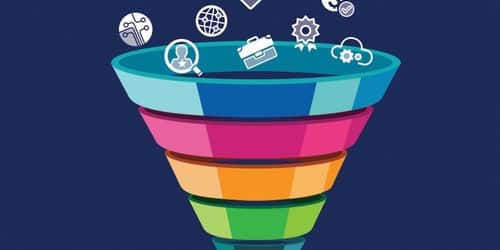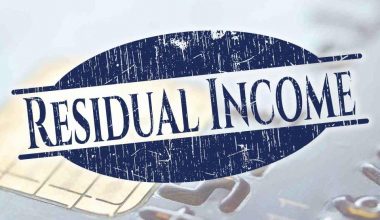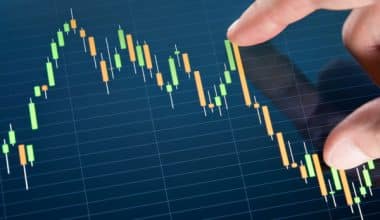Sales funnels are one of the most important tools for businesses to increase their sales and revenue. Sales funnels allow businesses to create a clear path for potential customers to convert into paying customers. In this blog post, I will be discussing what a sales funnel is, the benefits of using it, the different stages of a sales funnel, tips on building a sales funnel template, how to optimize it, and more.
What is a Sales Funnel?
A sales funnel is a process for turning potential customers into paying customers. The funnel begins with awareness and leads to conversion. It is a way of outlining the steps that a customer takes from the moment they become aware of your product or service until they make a purchase.
At the top of the funnel, you want to capture as many leads as possible. This can be done through content marketing, social media, email marketing, and other digital marketing techniques. Once you have a lead, you can then nurture them through the sales funnel.
At the middle of the funnel, you want to qualify leads and begin to offer them additional information about your product or service. This is done through follow-up emails, content marketing, webinars, and other methods.
At the bottom of the funnel, your goal is to close the sale. This is where you offer the customer a specific solution that solves their problem. You can also use upsells, discounts, and incentives to close the sale.
Benefits of Using a Sales Funnel
There are many benefits to using a sales funnel. First, it allows you to track the progress of potential customers through the entire sales process. This makes it easier to identify where potential customers are dropping off and what can be done to improve the process.
Second, it allows you to identify which marketing channels are working best for your business. This allows you to adjust your strategy and focus on the channels that are driving the most conversions.
Third, it allows you to automate parts of the sales process. This makes it easier to follow up with leads and nurture them through the funnel without having to manually do it yourself.
Finally, it allows you to track the performance of your marketing campaigns. This makes it easier to identify which campaigns are working and which are not so you can adjust your strategy accordingly.
The Stages of a Sales Funnel
The stages of a sales funnel can vary from business to business. Generally, there are three main stages: awareness, consideration, and conversion.
Stage #1. Awareness
At the awareness stage, you want to capture as many leads as possible. This can be done through content marketing, social media, email marketing, and other digital marketing techniques.
Stage #2. Consideration
At the consideration stage, you want to qualify leads and begin to offer them additional information about your product or service. This is done through follow-up emails, content marketing, webinars, and other methods.
Stage #3. Conversion
At the conversion stage, your goal is to close the sale. This is where you offer the customer a specific solution that solves their problem. You can also use upsells, discounts, and incentives to close the sale.
Building a Sales Funnel
When building a sales funnel, it’s important to have a clear idea of what your goals are and how you plan to achieve them. Start by defining your target customer and creating a customer persona. This will help you create content and offers that are tailored to your target customer.
Next, you’ll want to create a plan for how you will capture leads. This could be through content marketing, social media, email marketing, and other digital marketing techniques. You’ll also want to create a plan for how you will qualify leads and begin to offer them additional information about your product or service.
Finally, you’ll want to create a plan for how you will close the sale. This could be through upsells, discounts, or incentives. You’ll also want to create a plan for how you will measure and analyze the performance of your sales funnel.
Qualifying Leads in the Funnel
Qualifying leads is an important part of the sales funnel. You want to make sure that you are targeting the right people with the right offers. To do this, you’ll need to collect data about your leads and segment them into different categories.
For example, if you’re selling a subscription product, you might want to segment your leads into those who are likely to purchase, those who are unlikely to purchase, and those who are potential upsells. This will allow you to target each group with different offers and messaging.
You can also use automation to qualify leads. For example, you can set up automated emails based on different criteria such as the type of product they are interested in, their location, or their purchase history. This will allow you to target leads with the most relevant offers and increase your conversion rate.
Optimizing Your Sales Funnel
Once you have your sales funnel set up, it’s important to optimize it for maximum efficiency. This can be done by testing different strategies and tracking the results.
For example, you can test different types of offers to see which ones convert the best. You can also test different types of content and messaging to see which ones are most effective.
It’s also important to track your funnel performance and identify areas for improvement. For example, if you notice that the conversion rate is low at the middle of the funnel, you can focus on improving the content and offers in that stage.
Creating a Sales Funnel Template
Creating a sales funnel template can help you streamline the process and make it easier to set up and optimize your sales funnel. A good sales funnel template should include all of the stages of the funnel, the goals of each stage, and the strategies you plan to use to reach those goals.
You can create your own sales funnel template or use a template from a tool such as HubSpot or ClickFunnels. These tools have pre-built templates that make it easy to set up and optimize your sales funnel.
Tools and Strategies to Improve Your Sales Funnel
There are many tools and strategies you can use to improve your sales funnel. For example, you can use automation tools such as Zapier or IFTTT to automate parts of the funnel. You can also use analytics tools such as Google Analytics or Mixpanel to track the performance of the funnel.
You can also use A/B testing to identify which offers and messaging are most effective. This can help you optimize your funnel and increase conversions.
Finally, it’s important to review and adjust your funnel regularly. This will help you identify areas for improvement and make sure that your funnel is running at its best.
Analyzing Your Sales Funnel Performance
Analyzing your sales funnel performance is an important part of optimizing it. You should track the performance of your funnel over time and identify areas for improvement.
You can use analytics tools such as Google Analytics or Mixpanel to track the performance of your funnel. You can also use A/B testing to identify which offers and messaging are most effective.
It’s also important to review your funnel regularly and adjust it based on the data. This will help you optimize your funnel and increase conversions.
Automating Your Sales Funnel
Automating parts of your sales funnel can help you streamline the process and make it easier to manage. Automation tools such as Zapier or IFTTT can be used to automate parts of the funnel. For example, you can use automation to qualify leads and send follow-up emails.
You can also use analytics tools such as Google Analytics or Mixpanel to track the performance of your automation. This will help you identify areas for improvement and make sure that your automation is running at its best.
The Different Stages of a Sales Funnel
The stages of a sales funnel can vary from business to business. Generally, there are three main stages: awareness, consideration, and conversion.
At the awareness stage, you want to capture as many leads as possible. This can be done through content marketing, social media, email marketing, and other digital marketing techniques.
At the consideration stage, you want to qualify leads and begin to offer them additional information about your product or service. This is done through follow-up emails, content marketing, webinars, and other methods.
At the conversion stage, your goal is to close the sale. This is where you offer the customer a specific solution that solves their problem. You can also use upsells, discounts, and incentives to close the sale.
Examples of Effective Sales Funnels
There are many examples of effective sales funnels. For example, Dropbox was able to increase its sign-ups by using a multi-step funnel. They started by offering a free trial, then followed up with additional offers and incentives to close the sale.
Another example is Amazon’s Prime membership. They offer a free trial of the service, then follow up with additional offers and incentives to close the sale.
Finally, Airbnb has a multi-step funnel that allows them to capture leads and convert them into paying customers. They start by offering a discount on their first stay, then follow up with additional offers and incentives to close the sale.
Conclusion
In conclusion, sales funnels are an essential tool for businesses to increase their sales and revenue. They allow businesses to create a clear path for potential customers to convert into paying customers.
This blog post discussed what a sales funnel is, the benefits of using a sales funnel, the different stages of a sales funnel, tips on building a sales funnel, how to optimize a sales funnel, and more.
I hope this blog post gave you a better understanding of sales funnels and how you can use them to increase your sales and revenue.
Related Articles
- MARKETING VS SALES: What Are the Major Differences?
- SALES LEADS: How to Generate Sales Lead for any Business, Explained!!!
- What is Sales Forecasting? Methods and Real-world Examples
- What Is A Sales Funnel?: How to create a sales funnel(Stages, Examples, And Strategies)






